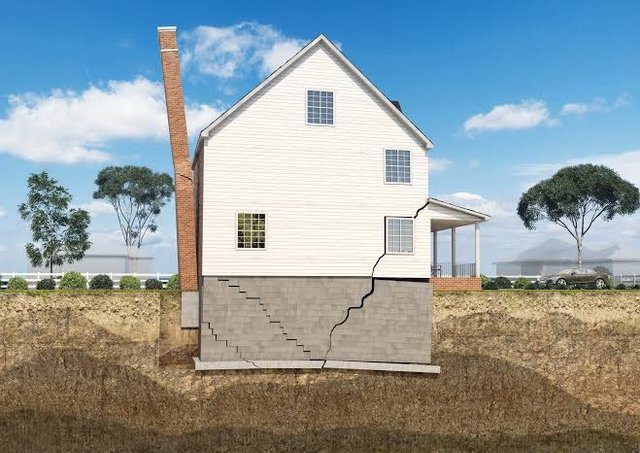The Construction Zone #10 — Soil Settlement
Hello everyone, I warmly welcome you to my blog. Today, I will be explaining one of the major concerns in not just residential building construction alone, but in building construction generally.
Having knowledge of this issue is important both to project owners and the construction team, and of course, no knowledge is a waste. Therefore, sit tight as we talk about Soil Settlement.
We are the Construction Zone
Soil settlement refers to the process by which the soil below a structure or building consolidates or compresses, resulting in sinking or settlement of the ground surface.
It is the vertical downward sinking or movement of the soil as a result of rearrangement of soil particles and compression under modifications in moisture content, applied load, or some other natural processes.
Soil settlement can give rise to issues for structures built on or in the range of the affected soil, like tilting, structural instability, or cracks. It is therefore an essential concept in geotechnical engineering in ensuring the stability and safety of buildings as well as infrastructure.
The various factors that cause soil settlement include the following:
Weight of building:
The weight of the building, as well as its foundation, can cause soil compression, resulting in settlement.
Soil type
Various categories of soil possess varying levels or degrees of compressibility, with some soils, such as clay, being more susceptible to settlement than others, such as sand.
Water content or Moisture content changes
Modifications in soil moisture can lead to settlement, particularly in soils that are more sensitive to water content, which can be either drying or wetting. In drying, water loss can make the soil shrink and settle, while in wetting, absorption of water can result in softening and further compression.
Human-induced activities
Activities such as tunneling, mining, as well as traffic of heavy machinery can disturb soil structure and give rise to settlement.
Compaction
Insufficient or inadequate Compaction of soil in the course of construction can result in settlement over time.
Consolidation
In fine-grained soil such as clay under pressure, water is slowly squeezed and compressed out of the soil's pores, causing the compression of the soil and settlement over time.
Changes in groundwater table
Soil's support can be reduced by the lowering of the groundwater table, and this eventually leads to settlement.
Natural processes or activities, such as organic decomposition, can equally contribute to settlement.
.jpeg) Source
SourceWhat are the types of Soil Settlement
There are different types or categories of soil settlement and they include:
Immediate or Elastic Settlement
This occurs immediately after loading or construction as a result of the weight of the building, basically in granular soils as soil particles rearrange.
Consolidation Settlement
This occurs gradually over time and is a long-term process in which water is turfed out from fine-grained soil as the soil compresses and consolidates under the weight of the structure or building.
Differential settlement
This settlement takes place when there is settlement of different parts of the building at varied rates, resulting in unevenness as well as possible structural damage.
Creep Settlement
As the name implies, this is a gradual, continuing deformation that takes place after basic consolidation, brought about by the gradual movement of soil particles.
What are the effects or impacts of soil settlement on residential buildings?
The overall impact or effect of soil settlement on residential buildings is structural damage.
Differential settlement also called uneven settlement can cause the following damages:
- Distortion
- Cracks on the walls and foundations
- Tilting
- Uneven floors and doors
- Structural damage to foundations, walls, as well as roofs
- Water damage and leaks
- Reduced safety and stability of the building
What are the factors influencing soil settlement?
This is one interesting question that shouldn't be left untouched or unanswered.
The various factors that influence soil settlement include:
- Foundation design and construction
- Drainage and water table
- Soil type and properties
- Construction techniques and compaction
- Load and building weight
What can be done to mitigate soil settlement?
Interestingly, a couple of proactive and reactive measures can be taken to mitigate soil settlement.
These measures are:
- Carry out meticulous site investigation as well as soil testing
- Design and construct foundations appropriate for the type of soil
- In the course of construction, employ proper compaction techniques
- Put in place a drainage system to manage soil moisture and the water table
- Monitor settlement during and after construction
By the comprehension of soil settlement and the application of proactive and reactive measures, homeowners as well as builders can reasonably and significantly mitigate the possible adverse event of structural damage and ensure the long-term safety and stability of residential buildings.

X promotion link